
COMPLEX
DIRECT
AMALGUM
RESTORATION
Balsam M. Mirdan

Complex posterior amalgam restorations should be
considered when large amounts of tooth structure are
missing, when one or more cusps need capping, and when
increased resistance and retention forms are
needed.
indication:
They are used:
-To replace missing tooth structure due to fracture or caries
or existing restorative material.
- When one or more cusps needs capping.
- When increased resistance and retention forms are
needed.

Used as an alternative to indirect restoration.
– For periodontal and orthodontic patients.
– Affordability.
– For old patients
– Used in tooth that have questionable pulpal prognosis.
– Can act as a foundation for crown.
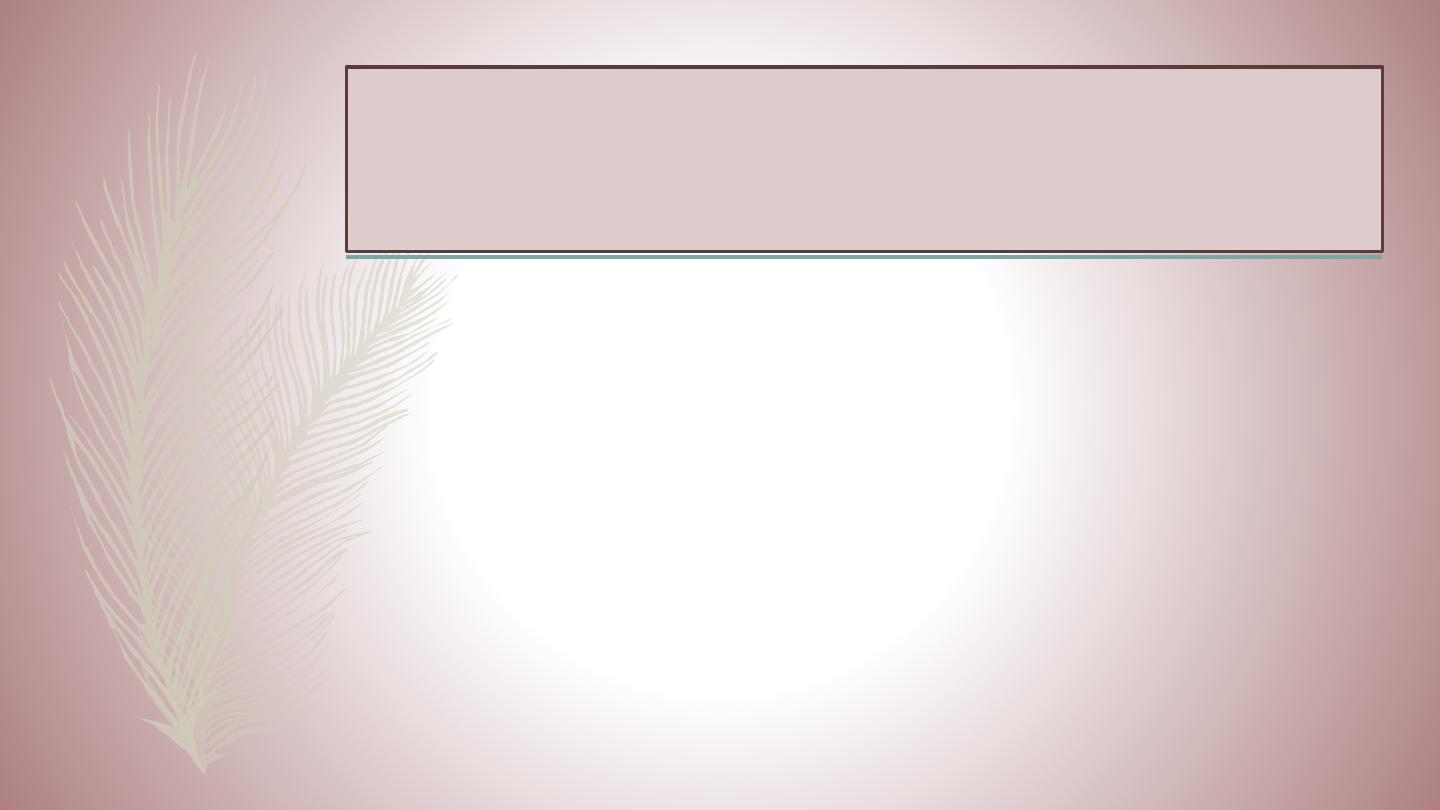
Resistance and Retention Forms
When conventional retention features are not adequate because of
insufficient remaining tooth structure, pins, slots, and elective groove
extensions may be used
to enhance retention form.
The retention features needed depend on:
the amount of tooth structure remaining and the tooth being
restored.
As more tooth structure is lost, more auxiliary retention is required.
Pins, slots.

Status and Prognosis of Tooth
A tooth with severe caries that may require endodontic therapy or crown
lengthening or that has an uncertain periodontal prognosis often is treated initially
with a control restoration.
A control restoration helps
(1) protect the pulp from the oral cavity (i.e., fluids, thermal stresses,
pH changes, bacteria),
(2) provide an anatomic contour against which the gingival tissue may be healthier,
(3) facilitate control of caries and plaque
(4) provide some resistance against tooth fracture (or propagation of an existing
fracture)

Role of the Tooth in Overall
Treatment Plan
complex amalgam restorations are used occasionally as an alternative to indirect
restorations.
– Abutment teeth for fixed prostheses may use a complex restoration a foundation.
– For periodontal and orthodontic patients, the complex restoration may be
the restoration of choice until the final phase of treatment.

Occlusion, Esthetics, and
Economics
Complex amalgam restorations are sometimes indicated as interim restorations for
teeth that require elaborate occlusal alterations, ranging from vertical dimension
changes to correcting occlusal plane discrepancies.
*********Cost

CONTRAINDICATIONS
– If patient has occlusal problems.
– If the tooth cannot be restored properly with direct
restoration because of anatomic or functional
considerations.
– If the area to be restored is esthetically important to the
patient.
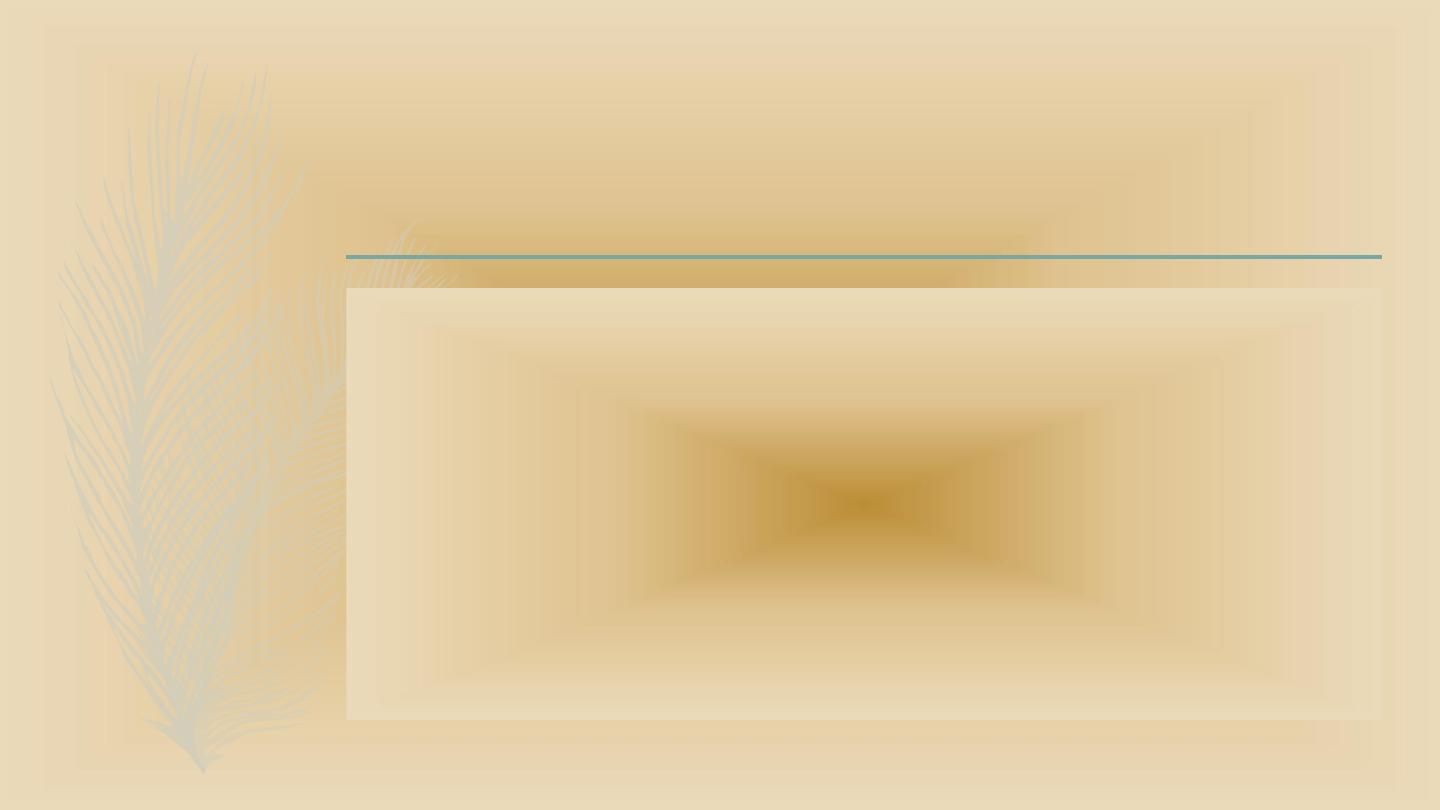
ADVANTAGES
– Conserves tooth structure.(less cutting)
– Less time required.
– Resistance and retentive forms significantly increased by
pins and slots.
– Economics.
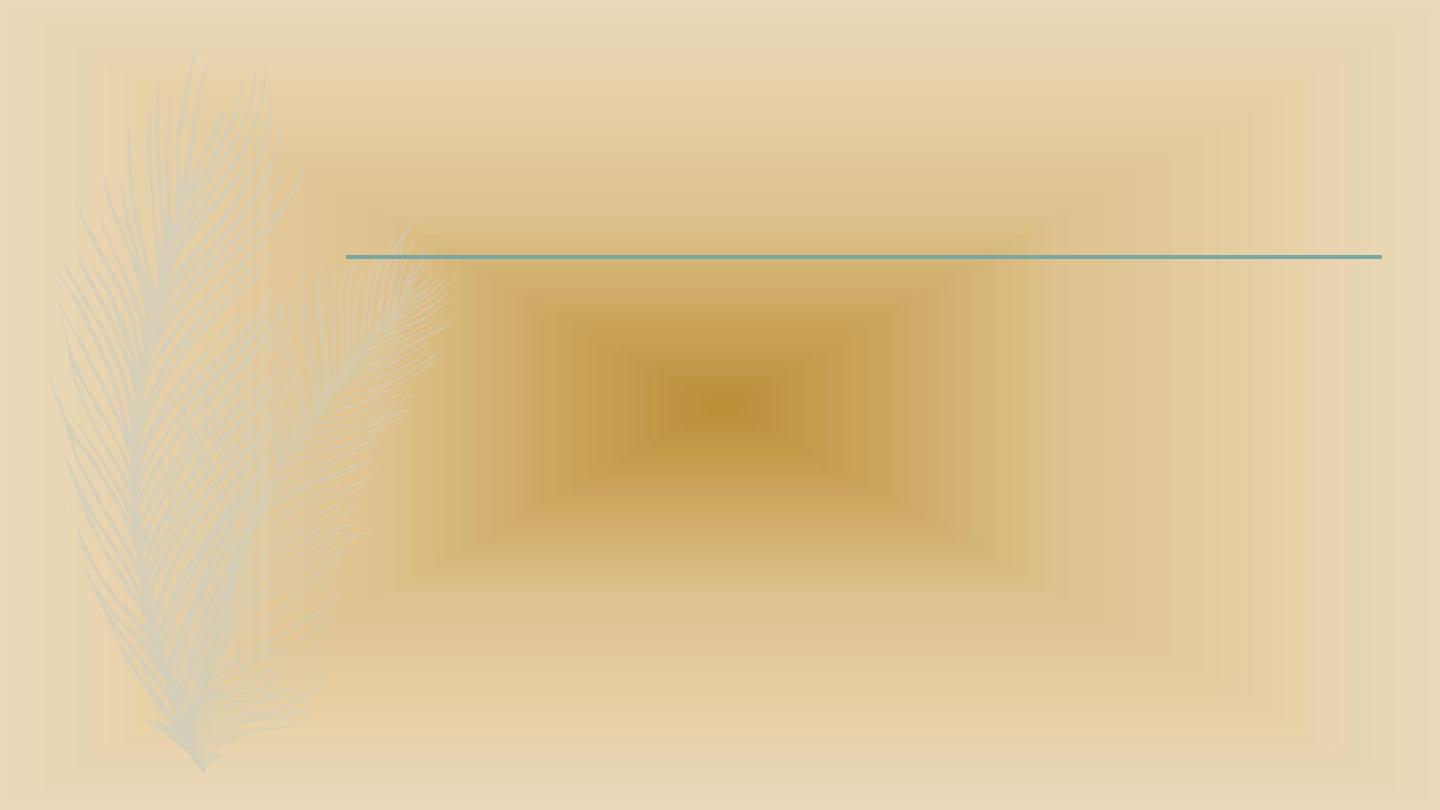
Disadvantages
– Dentinal micro fractures.
– Microleakage.
– Decreased tensile strength of amalgam.
– Penetration and perforation.
– Tooth anatomy cannot be replicated like that
– in indirect restoration.
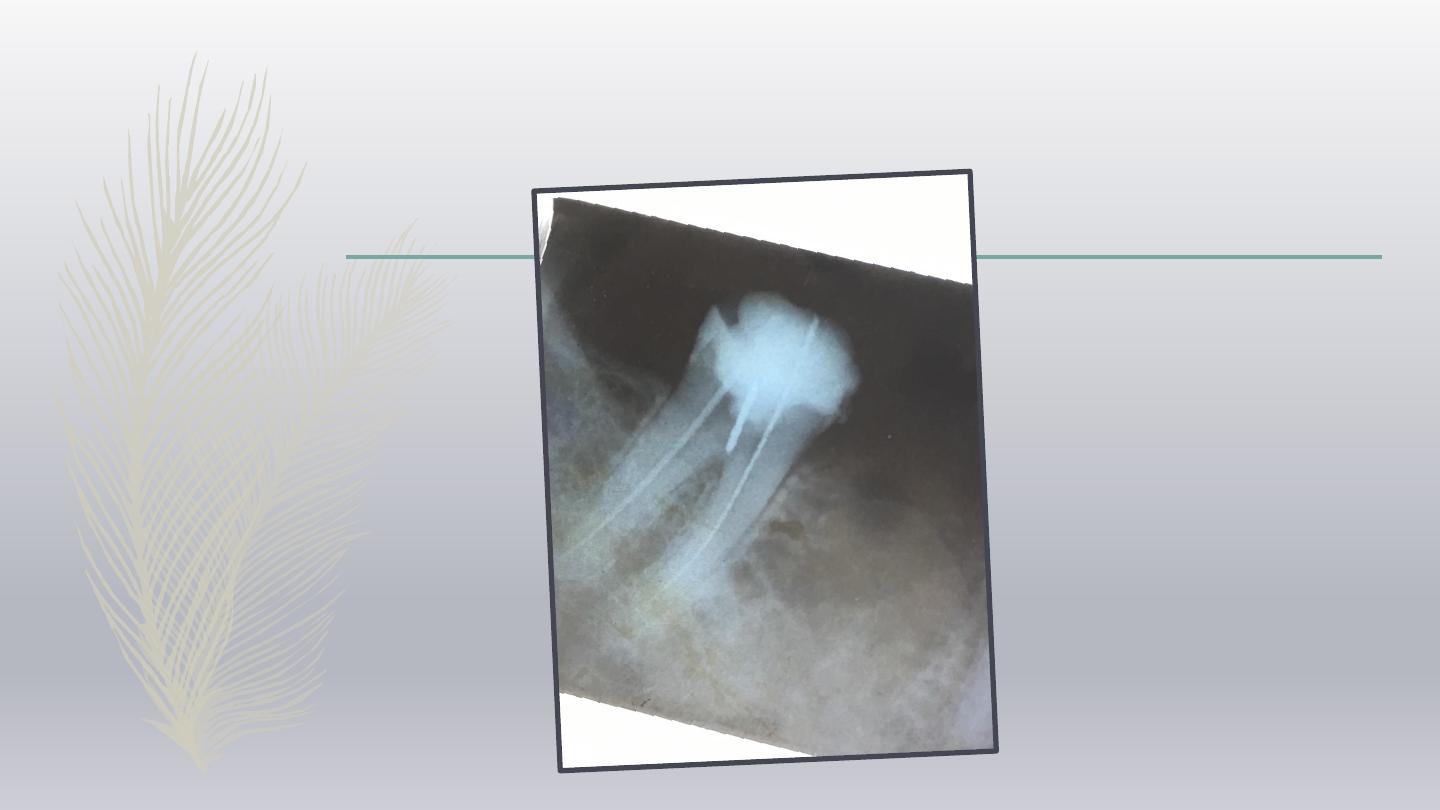
PERFORATION
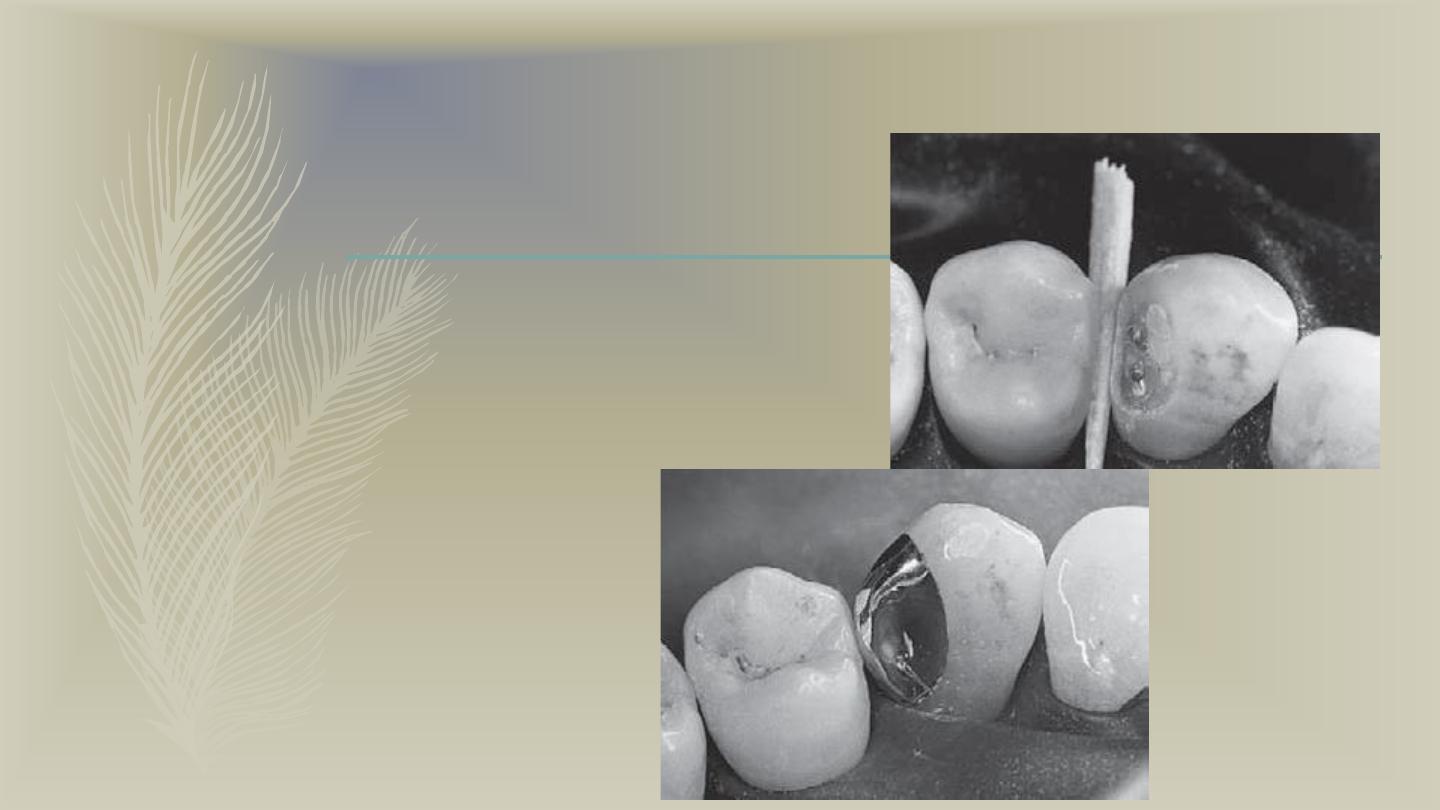
NON PIN MECHANICAL
FEATURES
• Parallel or convergent walls.
• Box form.
• Flat pulpal and gingival floors.
• Grooves in proximal line angles.
• Dovetails.
• Reduction of undermined cusps.
• Coves/locks.
• Amalgapins.
• Slots.

– Coves are prepared in a horizontal plane, and locks are
prepared in a vertical plane.
– These locks and coves should be prepared before
preparing pinholes and inserting pins.
– Slots may be prepared along the gingival floor, axial to
the dentinoenamel junction (DEJ) instead of, or in
addition to, pins
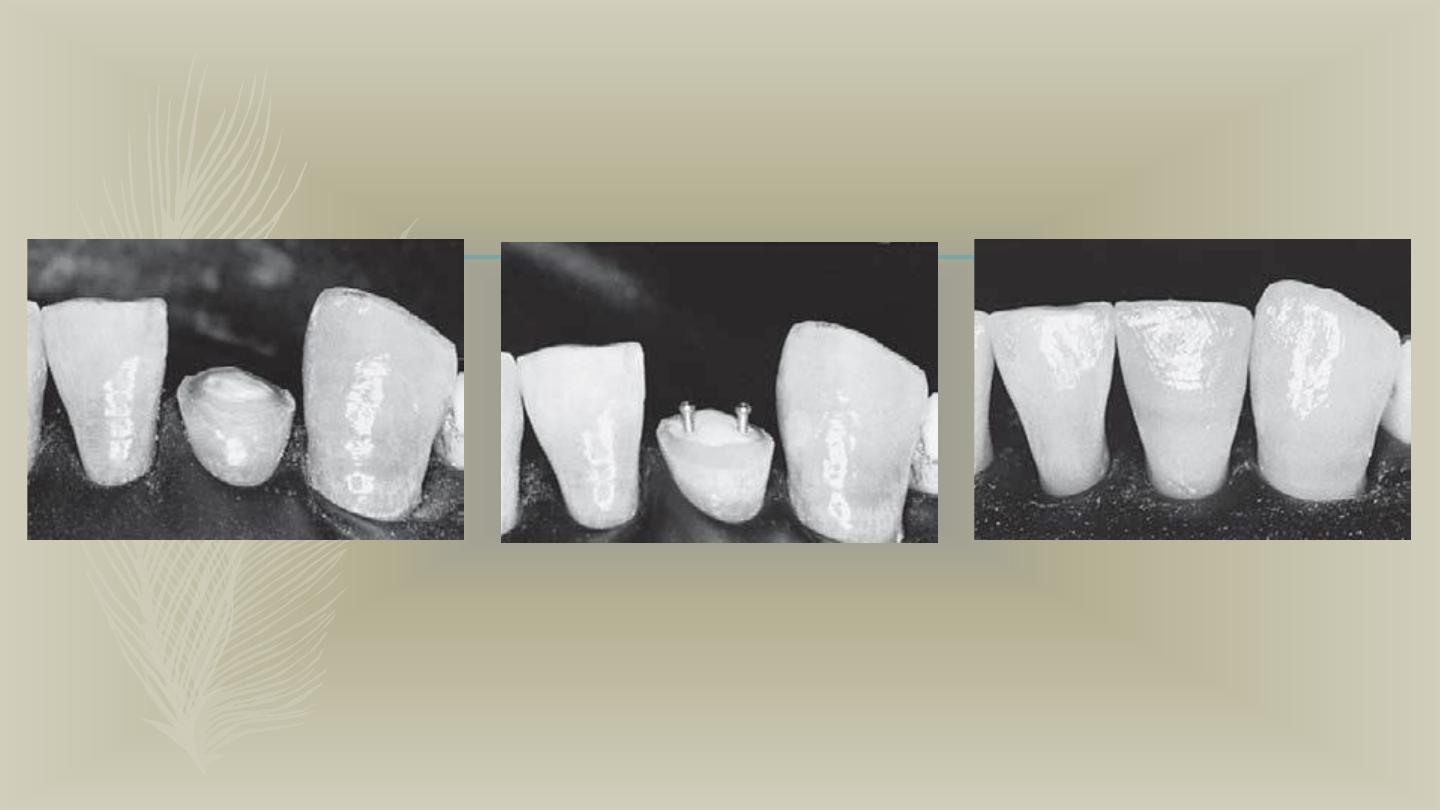
Using light-cured composite to restore fractured mandibular lateral incisor. A, Cavosurface bevel prepared at
45 degrees to external enamel surface and liner of calcium hydroxide applied. B, Minikin pins placed and
enamel etched. C, Restoration completed
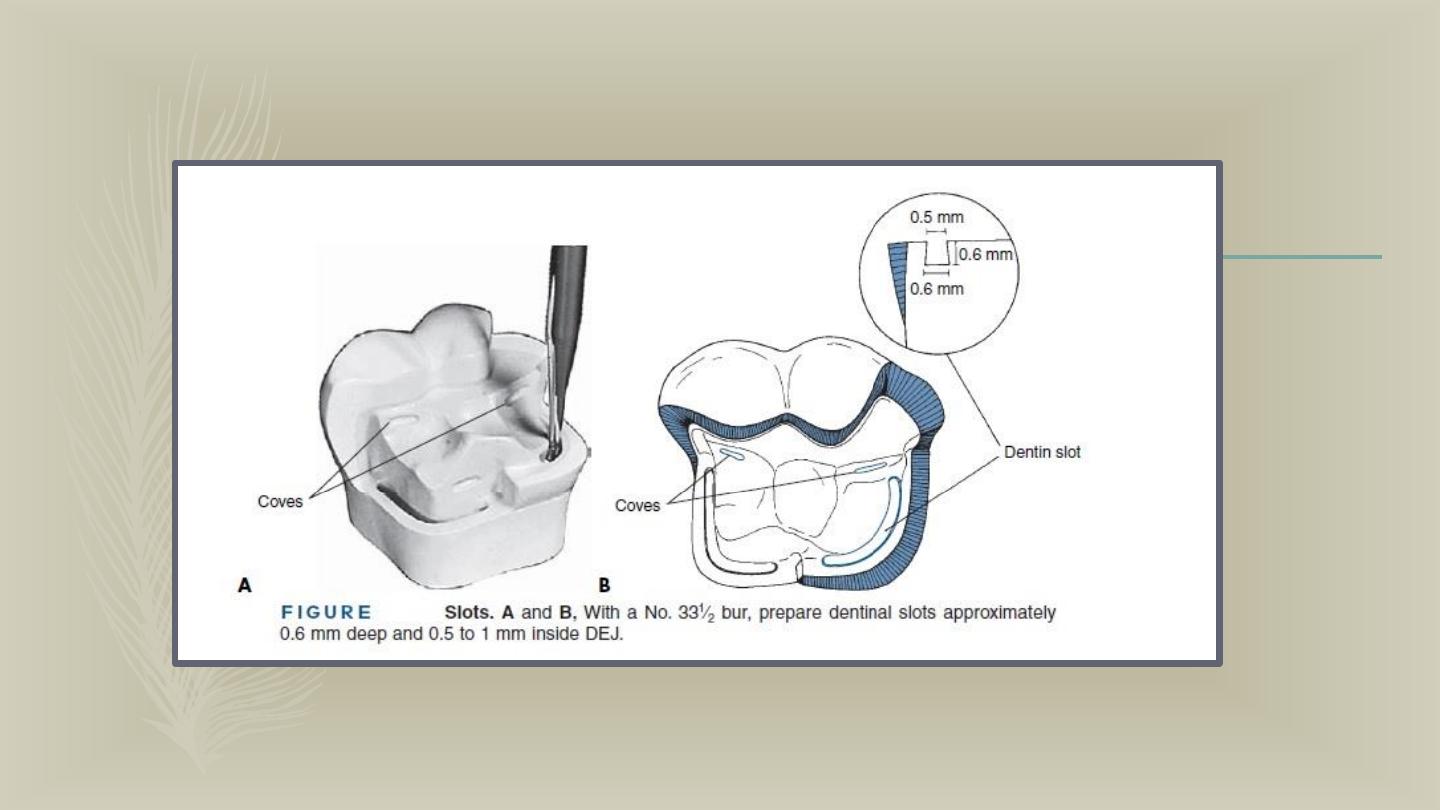
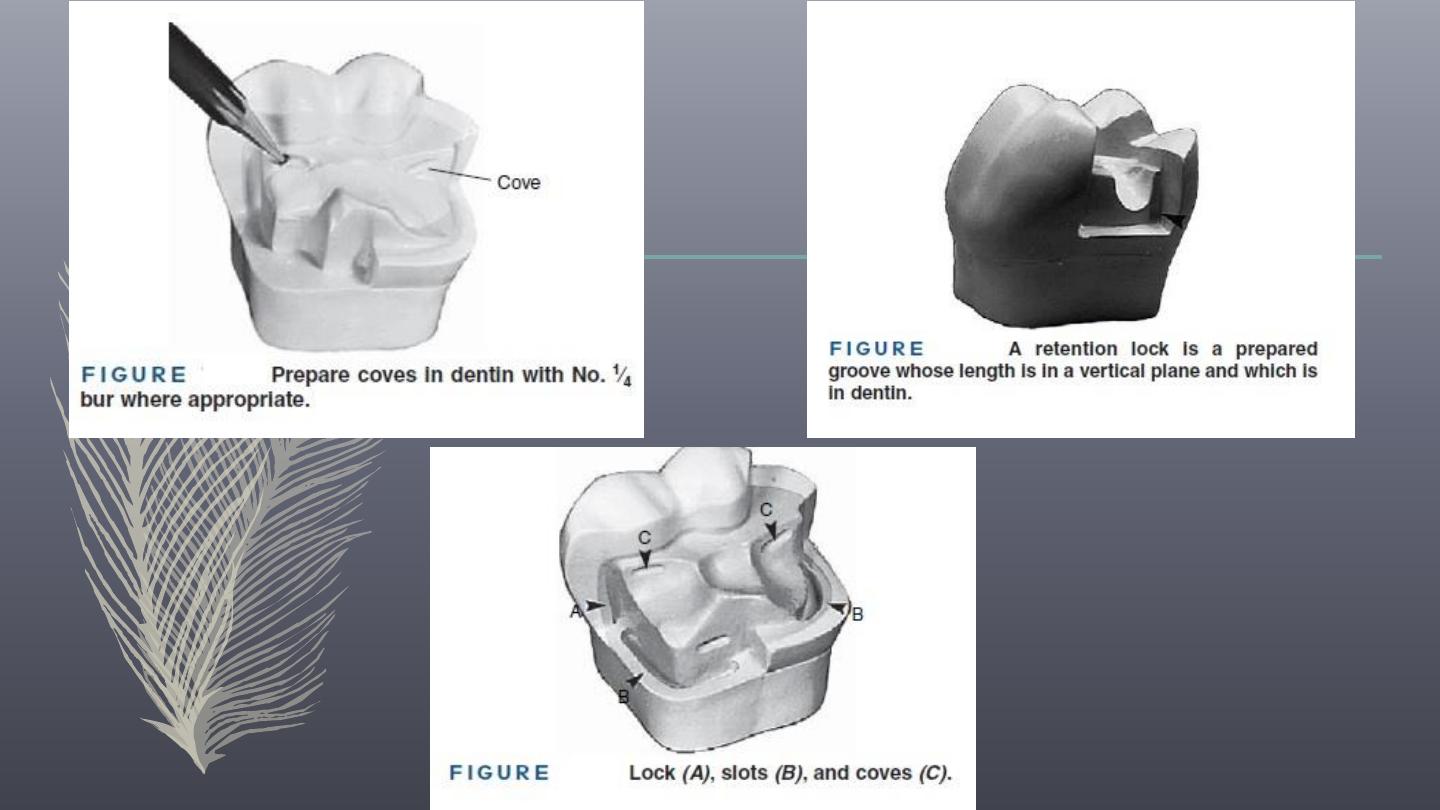
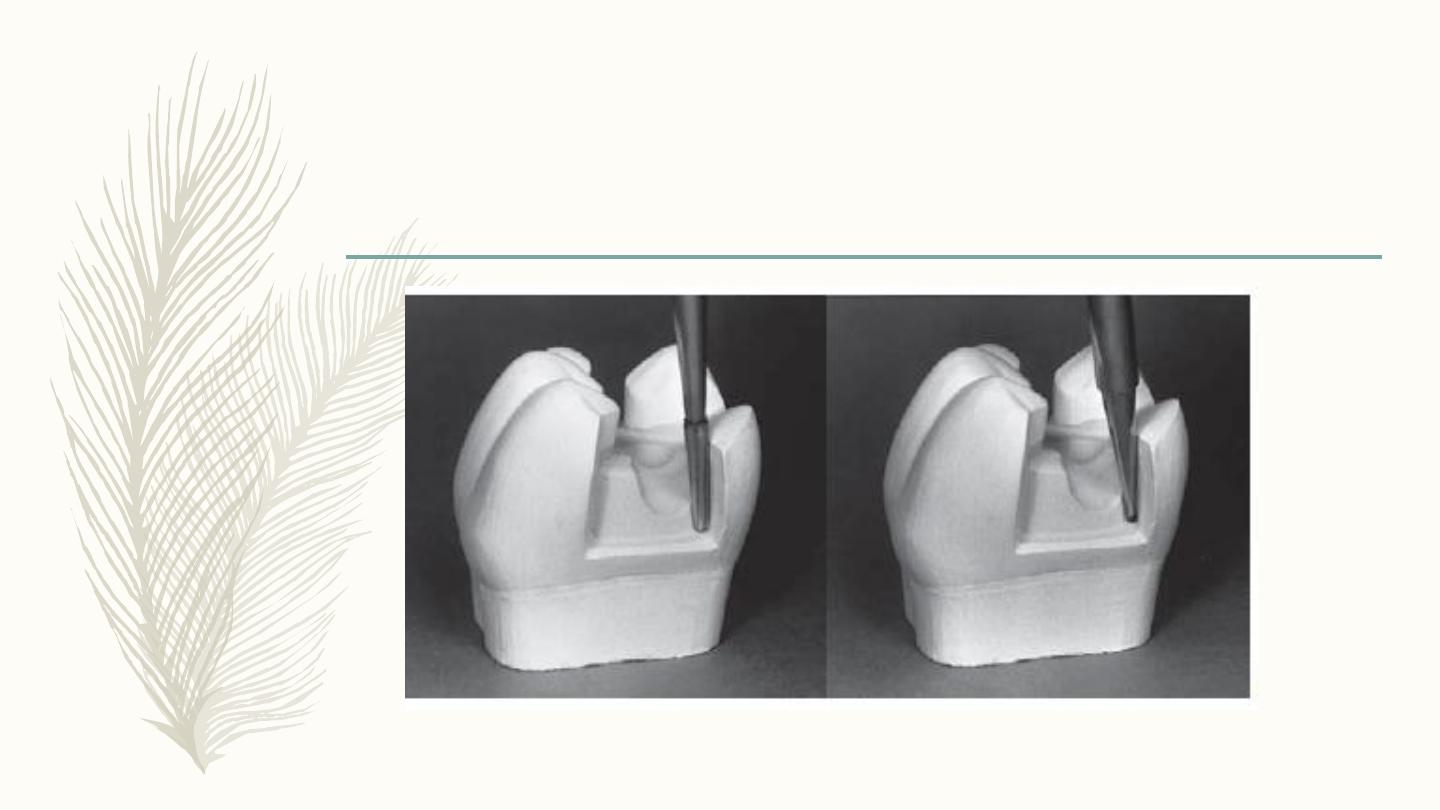
Placement of retention lock

THE RESTORATIVE
MATERIAL USED
– Amalgam
– Composite
– Reinforced Glass ionomer cermet

Cusp Tipping
– faciolingual extension of the occlusal preparation exceeds two
thirds the distance between the facial and lingual cusp tips
reduction of the cusp is usually required to enhance the resistance
mean
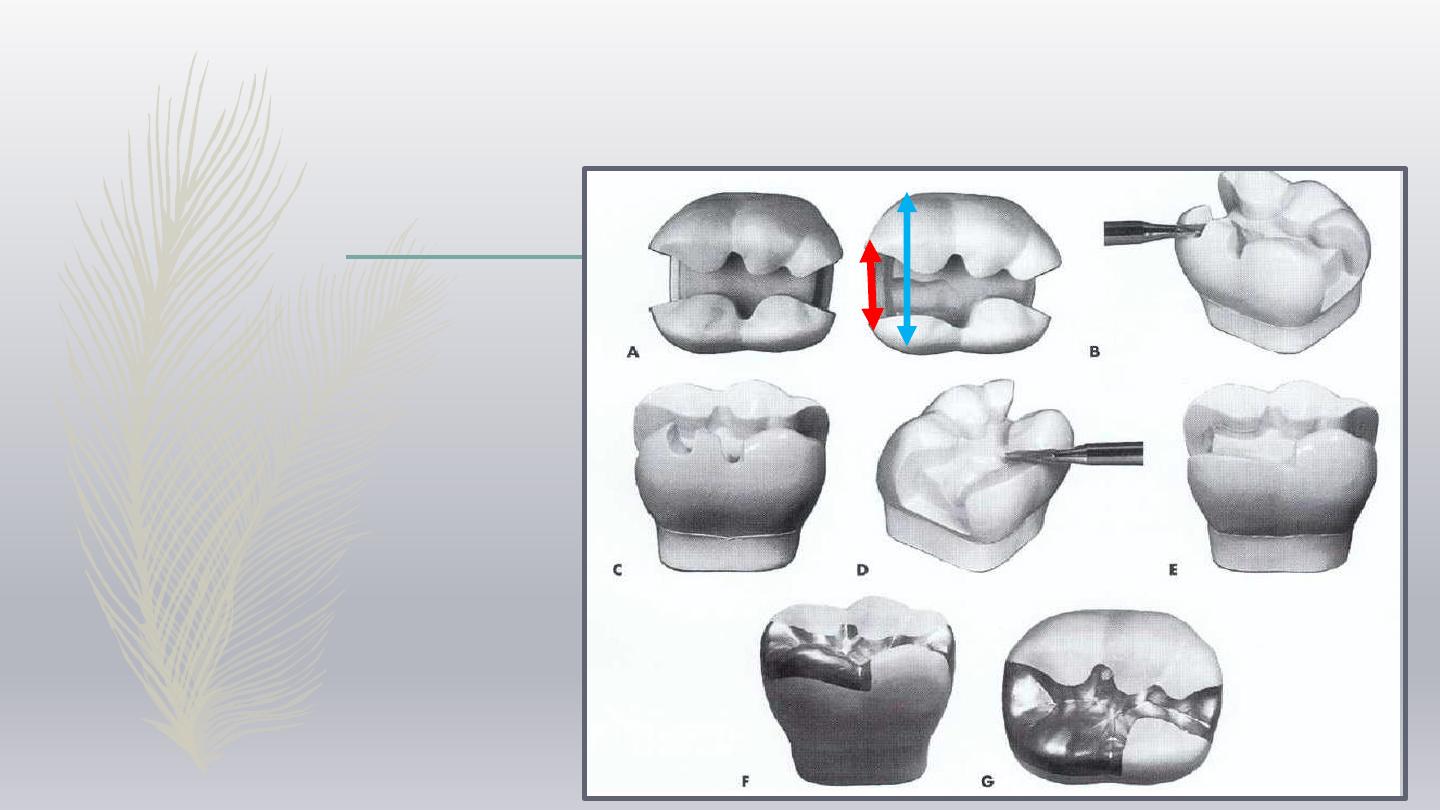
Tooth Preparation
Cusp tipping
The depth cuts should be a
minimum of 2 mm deep for
functional cusps and 1.5
mm deep for nonfunctional
cusps
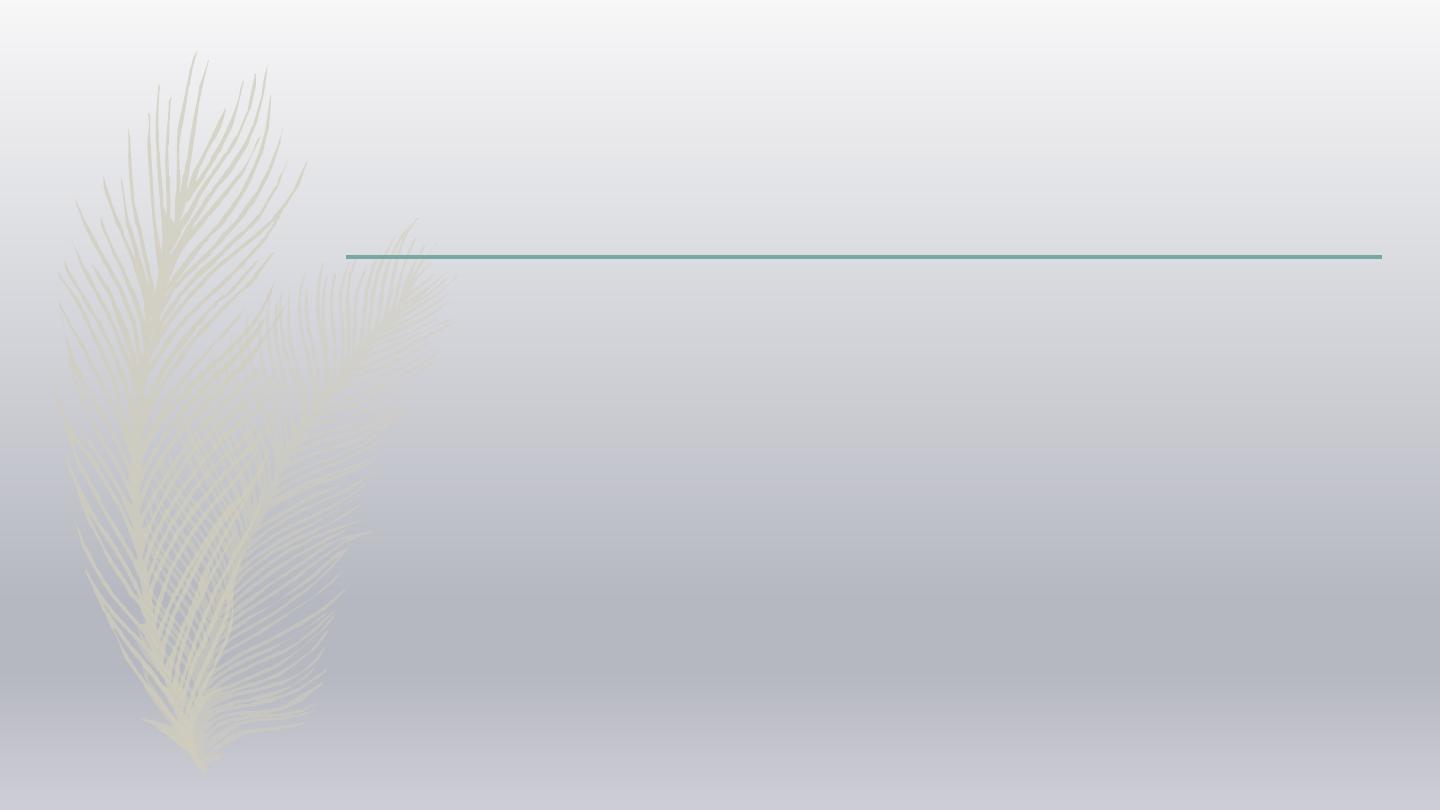
Final goal
the final restoration has restored cusps with a minimal
thickness of 2 mm of amalgam for functional cusps and 1.5
mm of amalgam for nonfunctional cusps
Any sharp internal corners of the tooth preparation
formed at the junction of prepared surfaces should be
rounded to reduce stress concentration in the amalgam
and improve its resistance to fracture from occlusal forces

Cusp tipping
– Cusp reduction significantly diminishes retention form by
decreasing the
height of the vertical walls
.
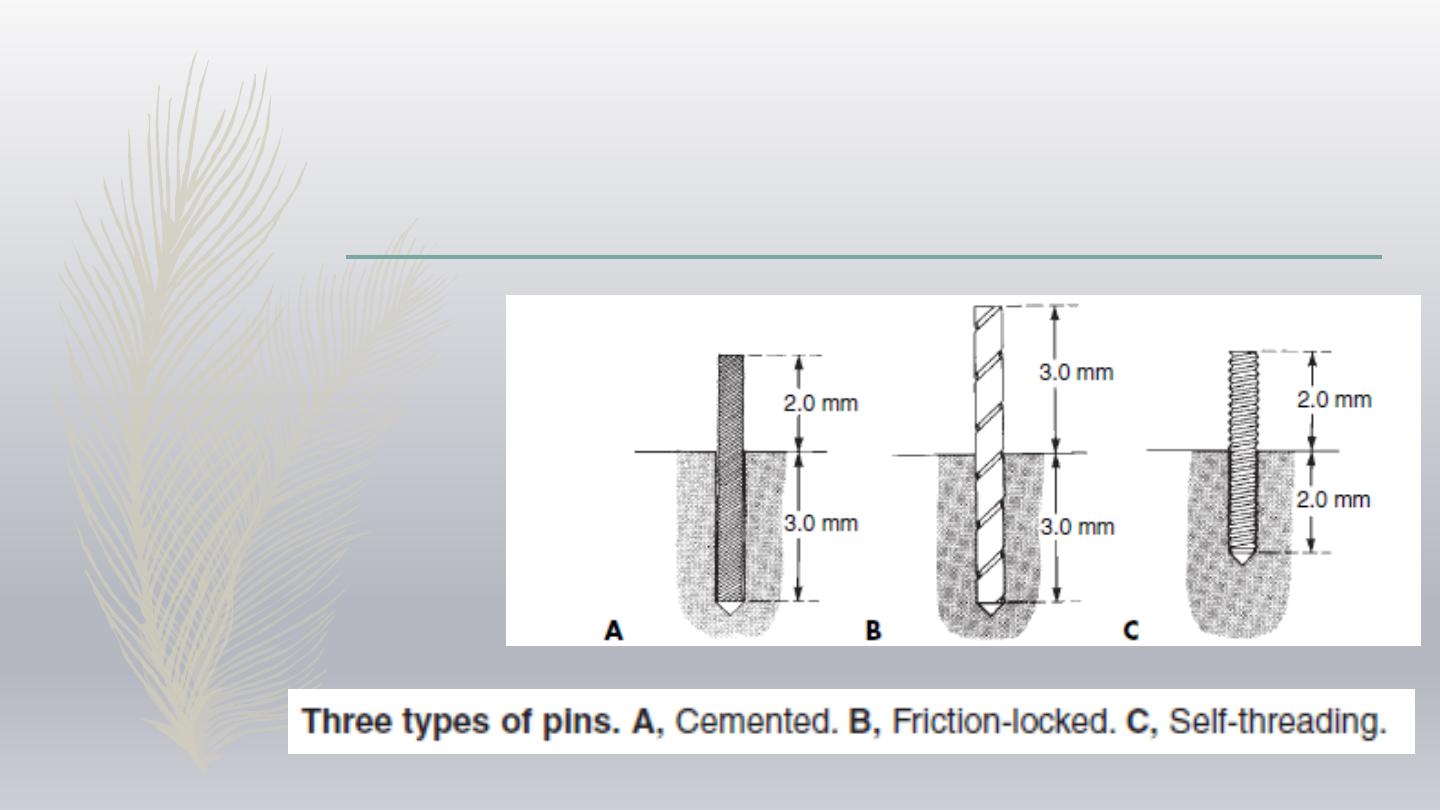
PIN
– Cemented pin
– Friction locked pin
– Self threading pin
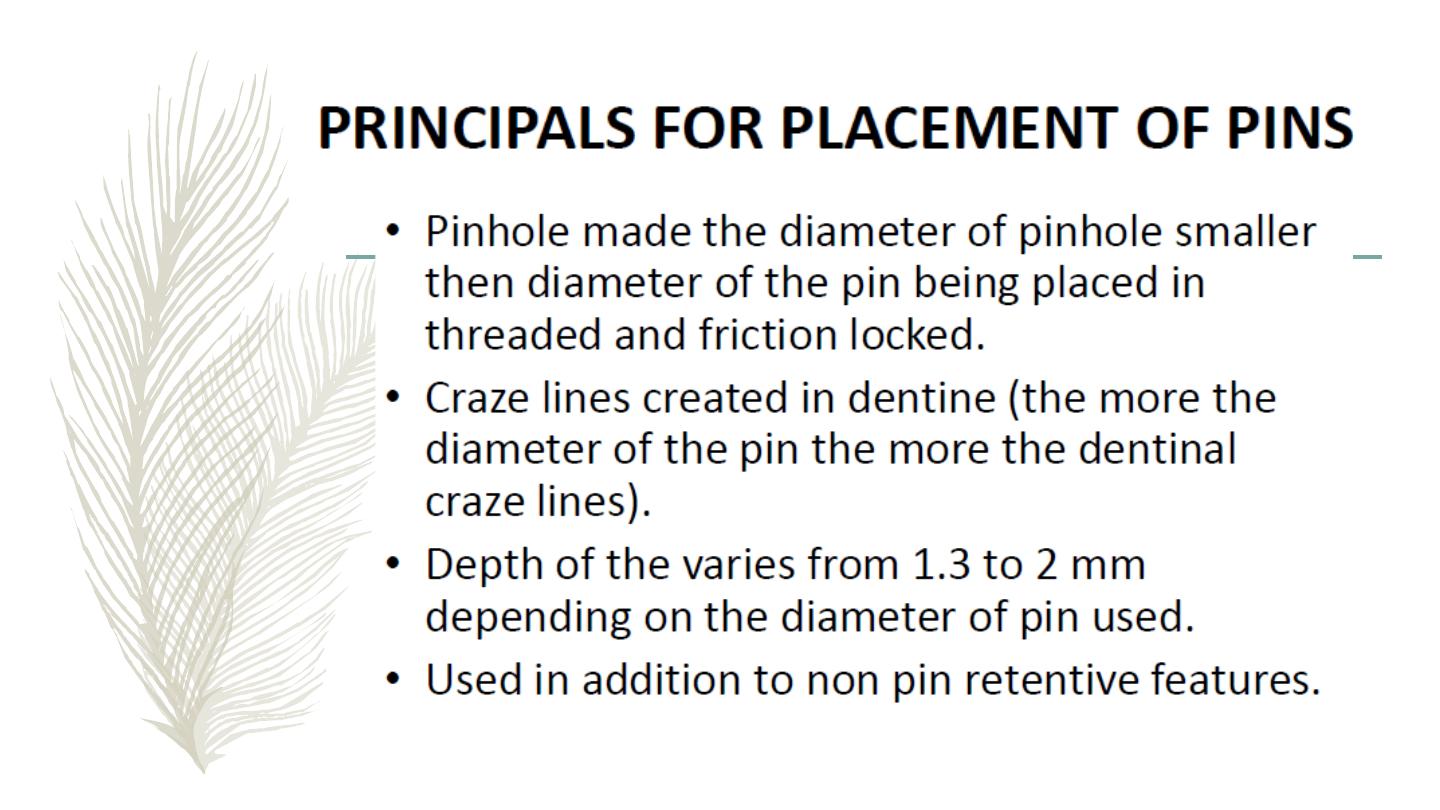
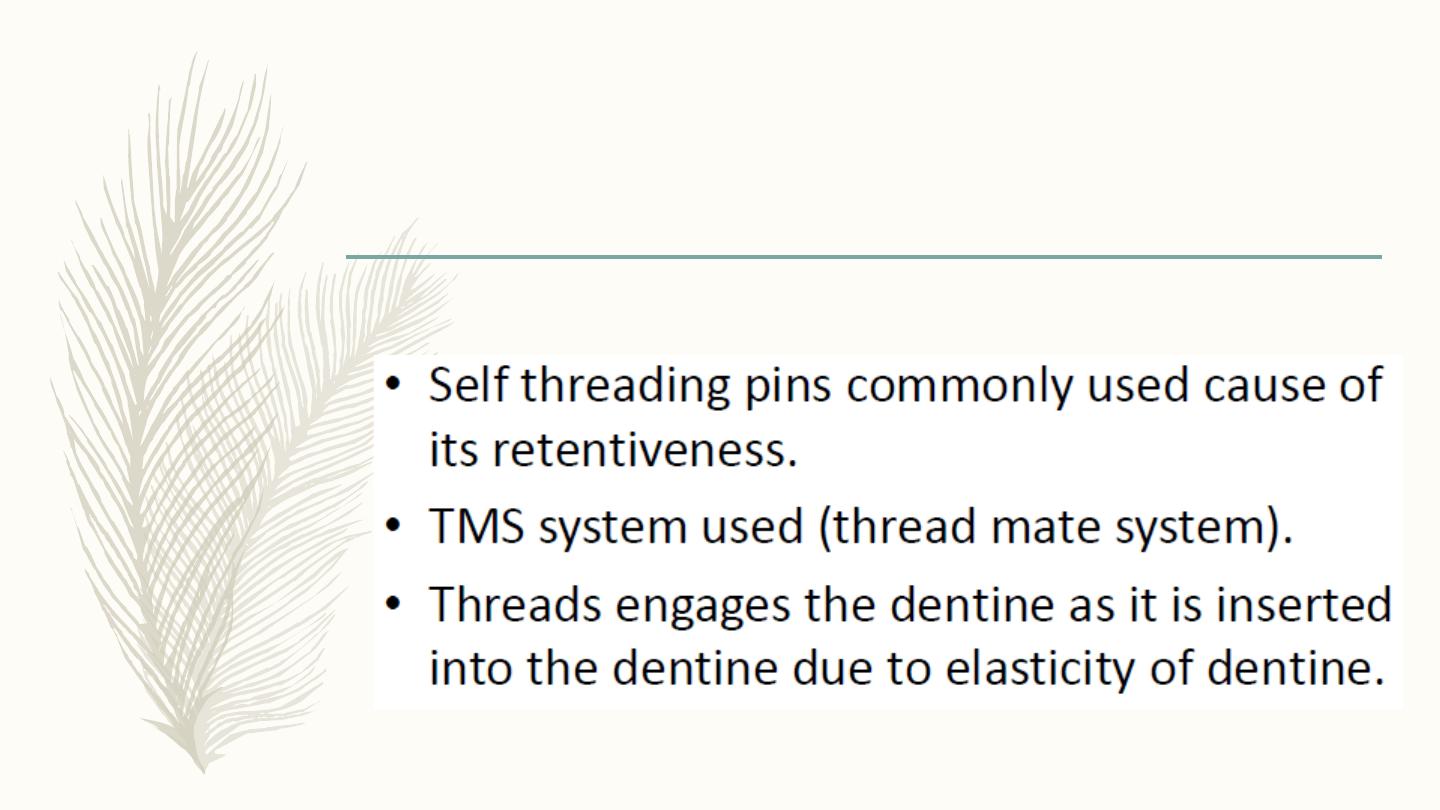
SELF THREADING PINS
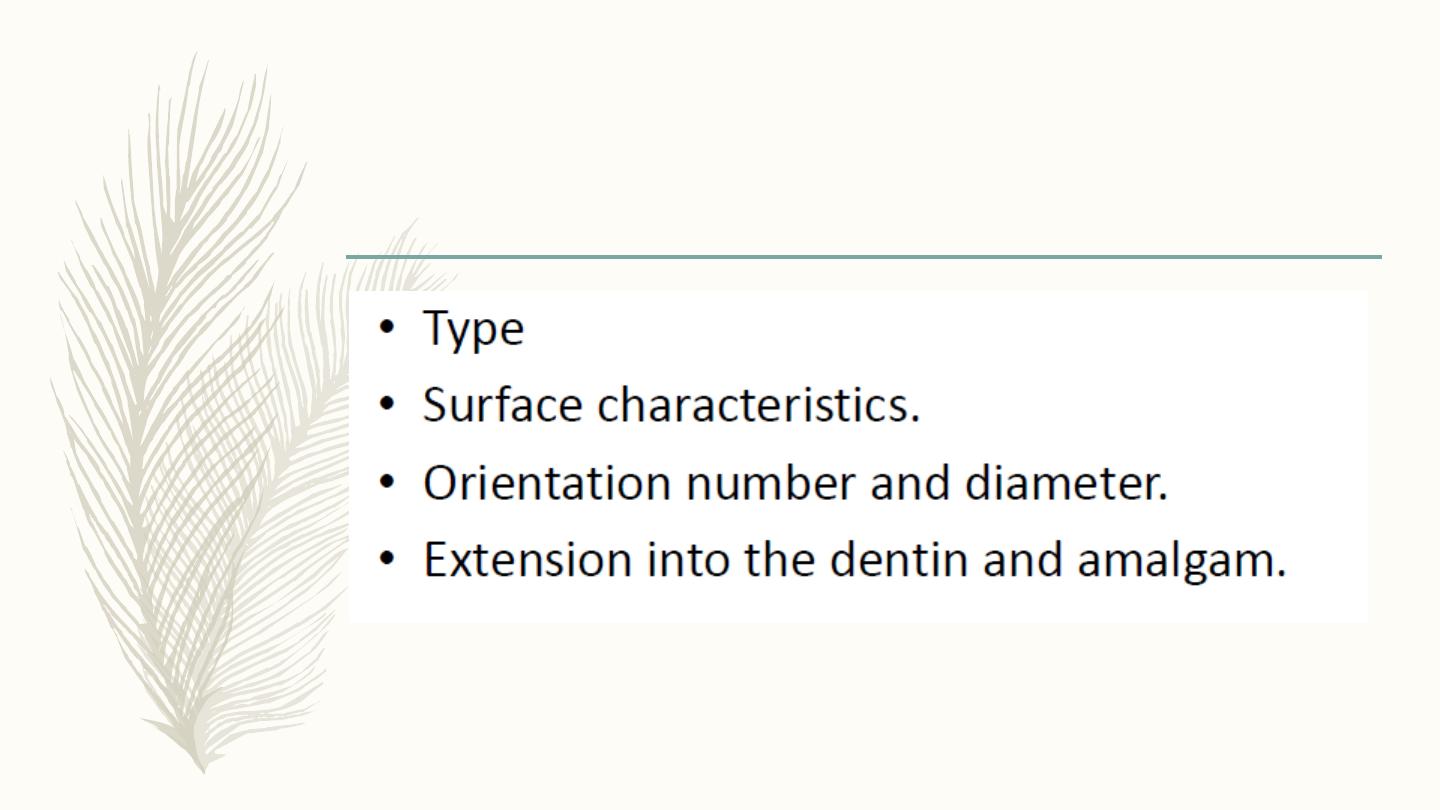
FACTOR AFFECTING THE RETENTION
OF THE PIN IN DENTIBE AND
AMALGUM
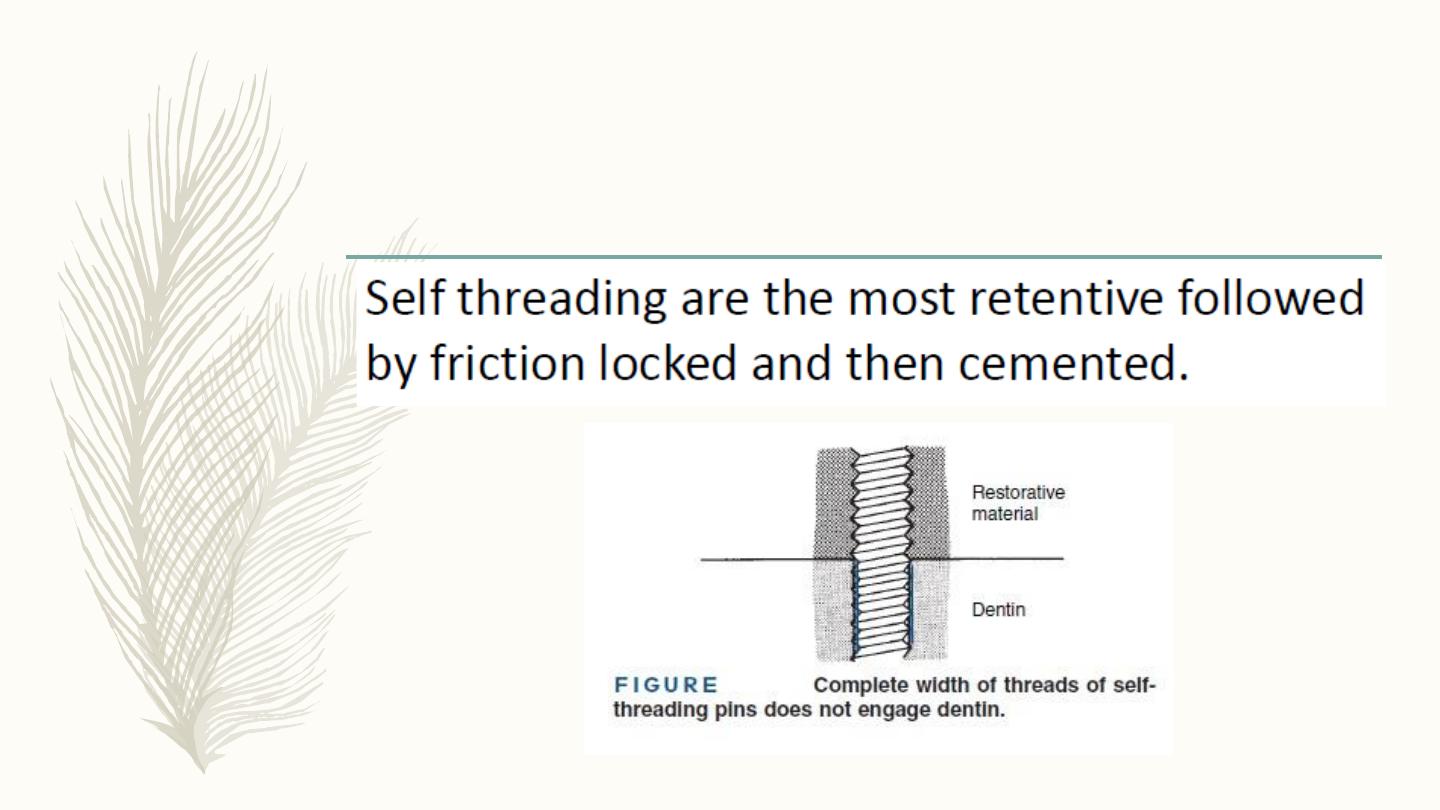
TYPE
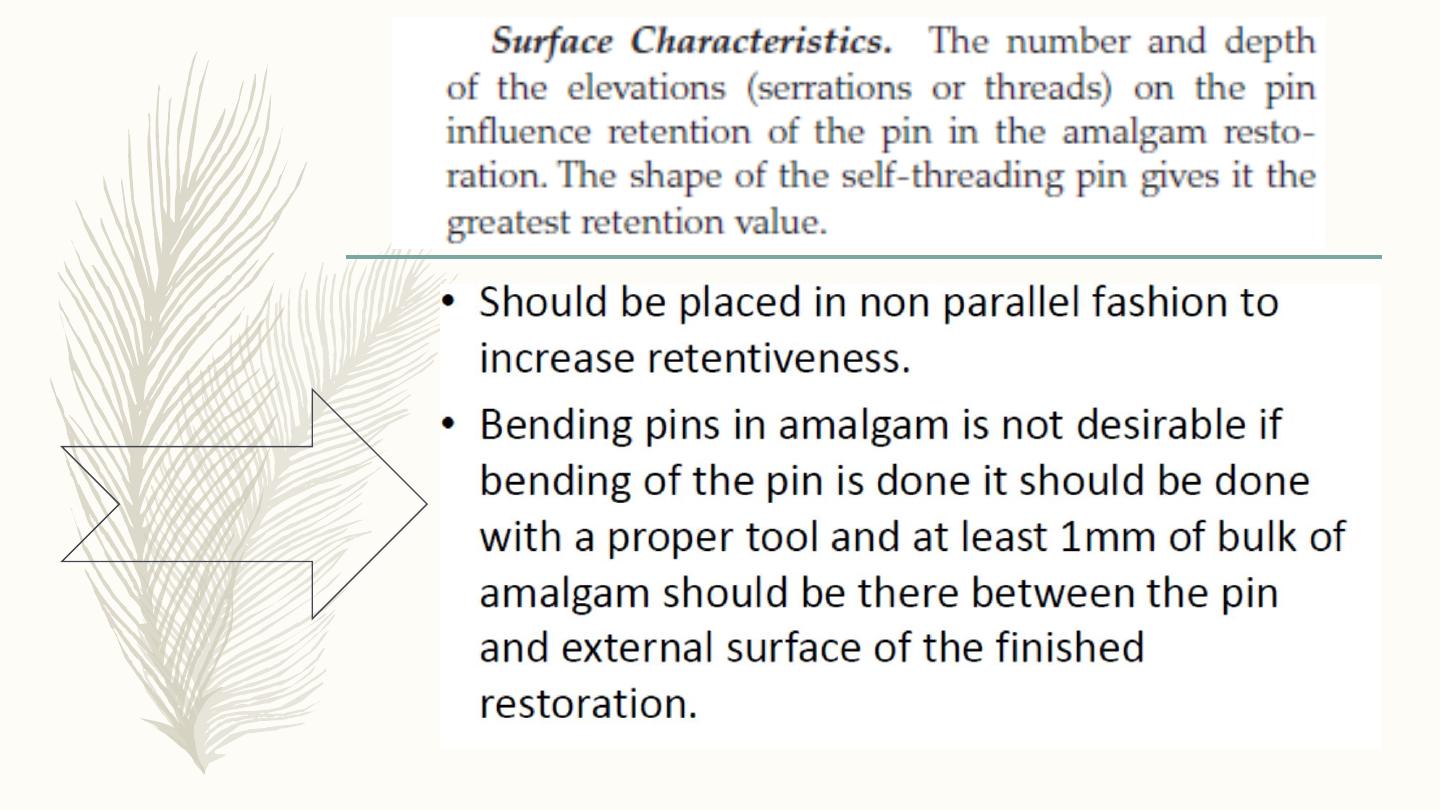
ORIENTATION
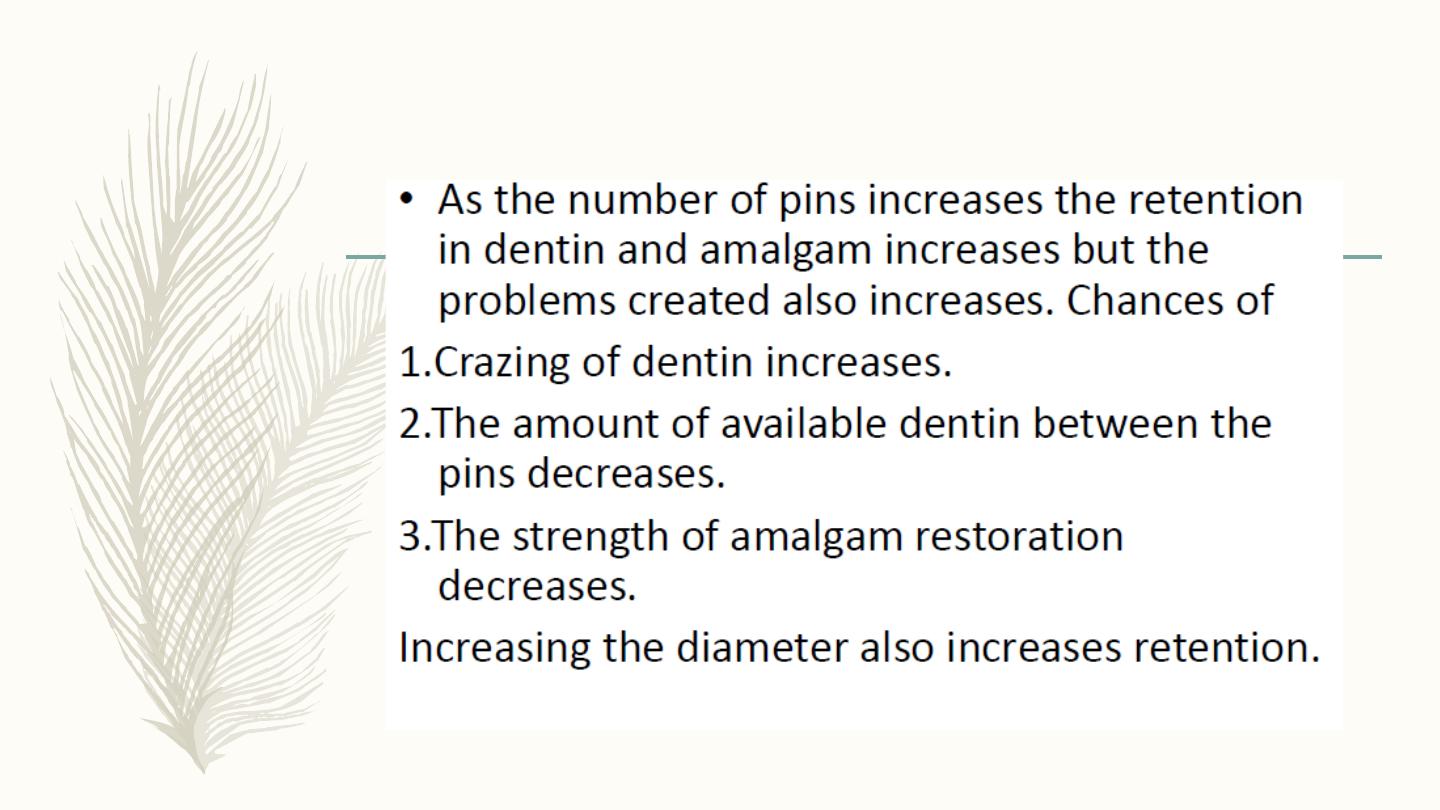
NUMBER
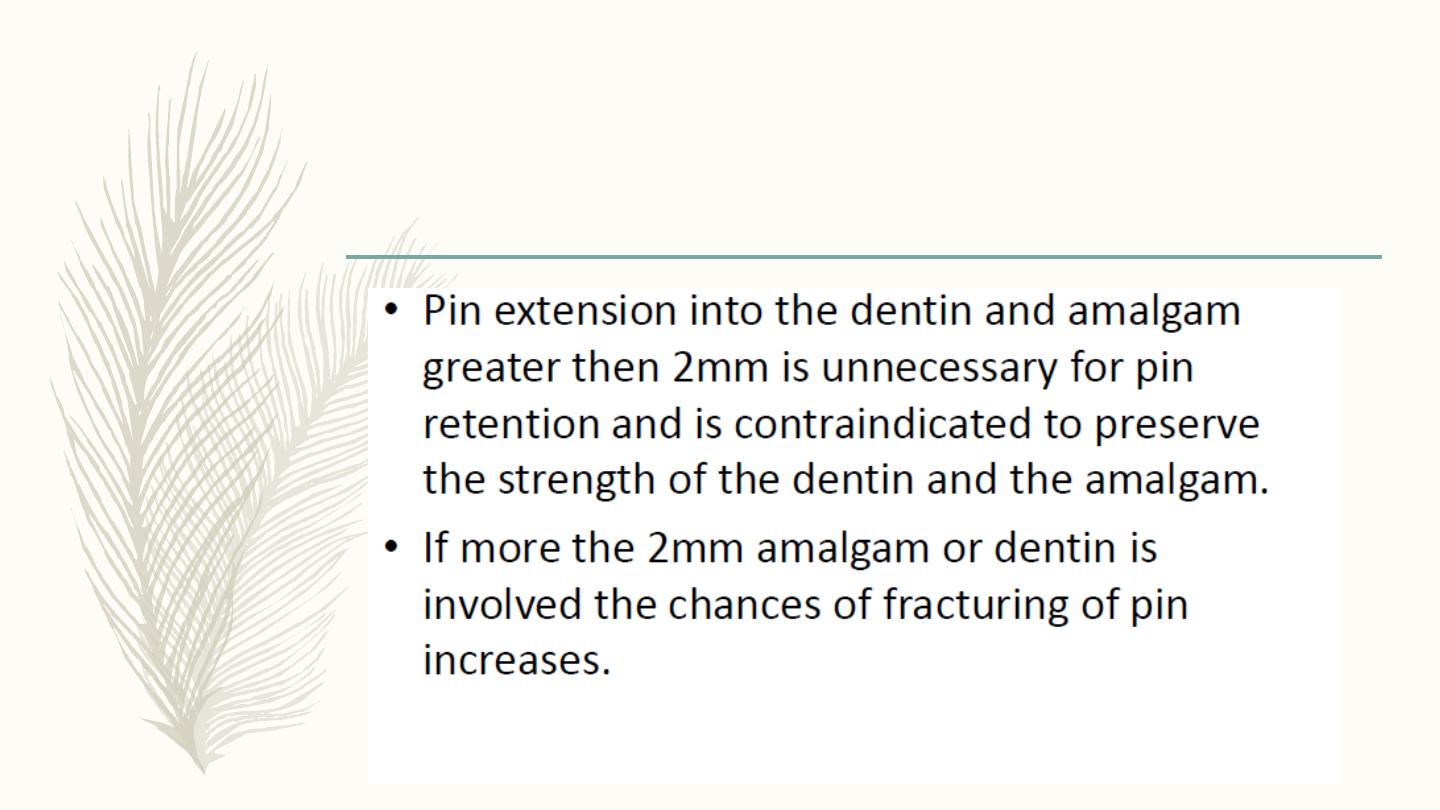
EXTENSION INTO THE
DENTIN AND AMALGUM
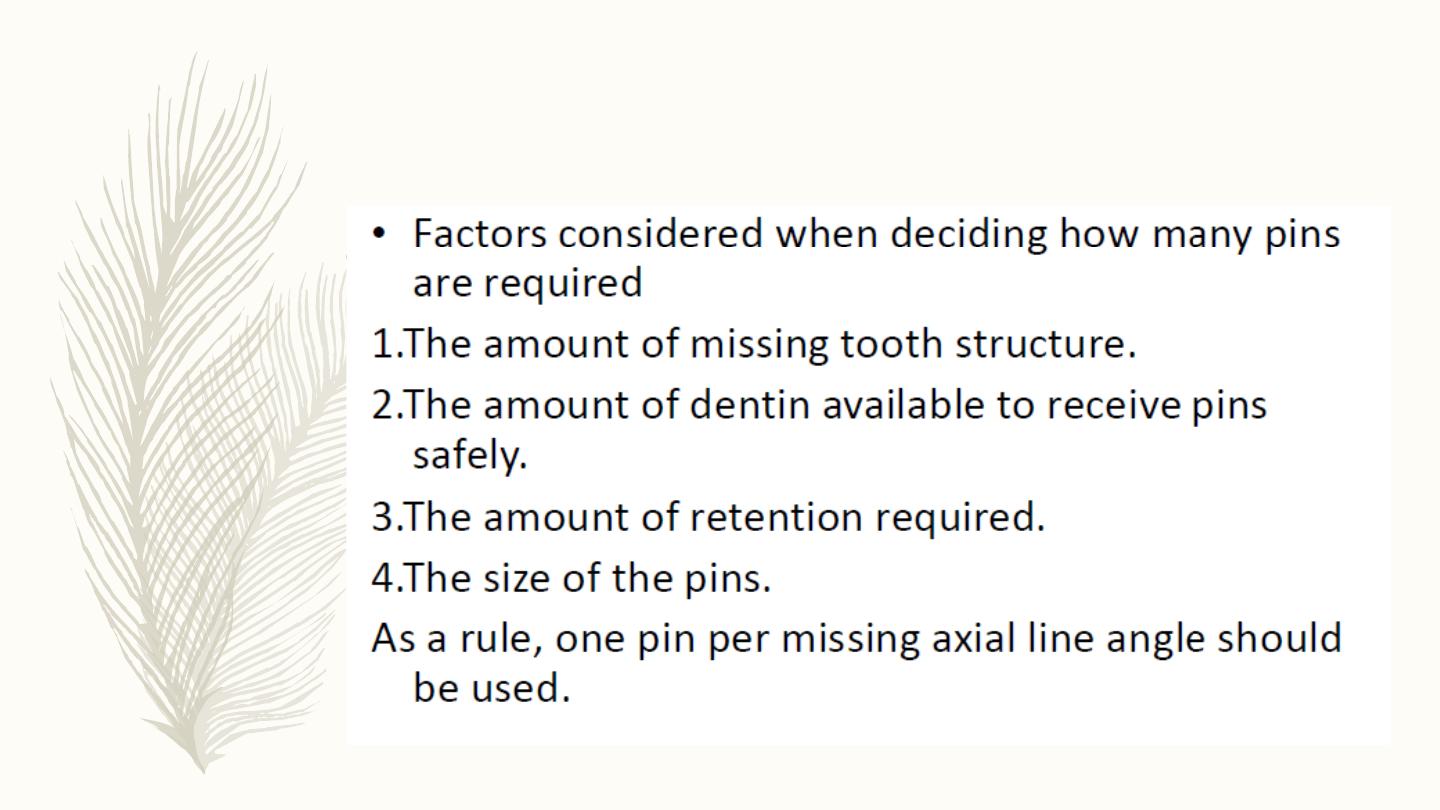
NUMBER OF PINS
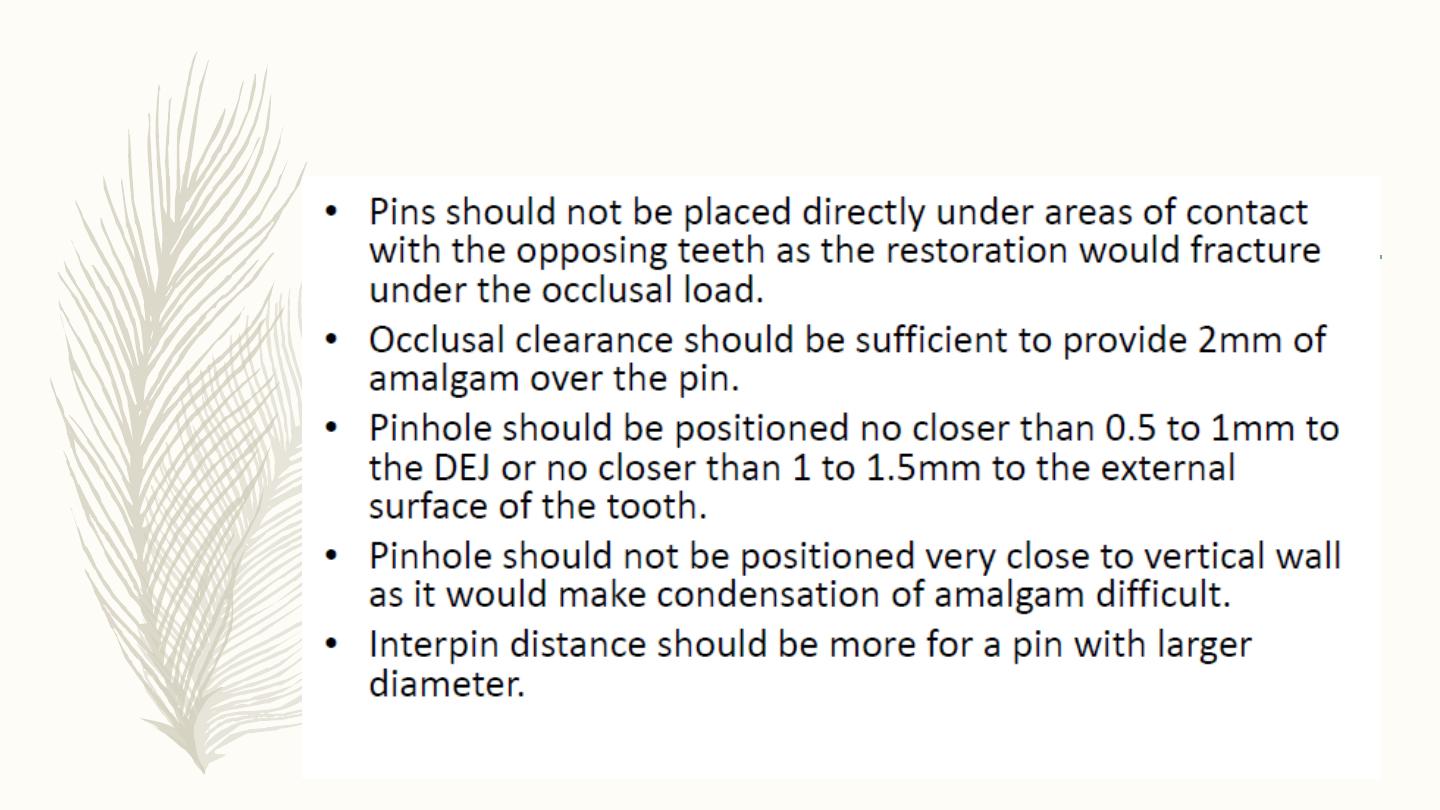
LOCATION
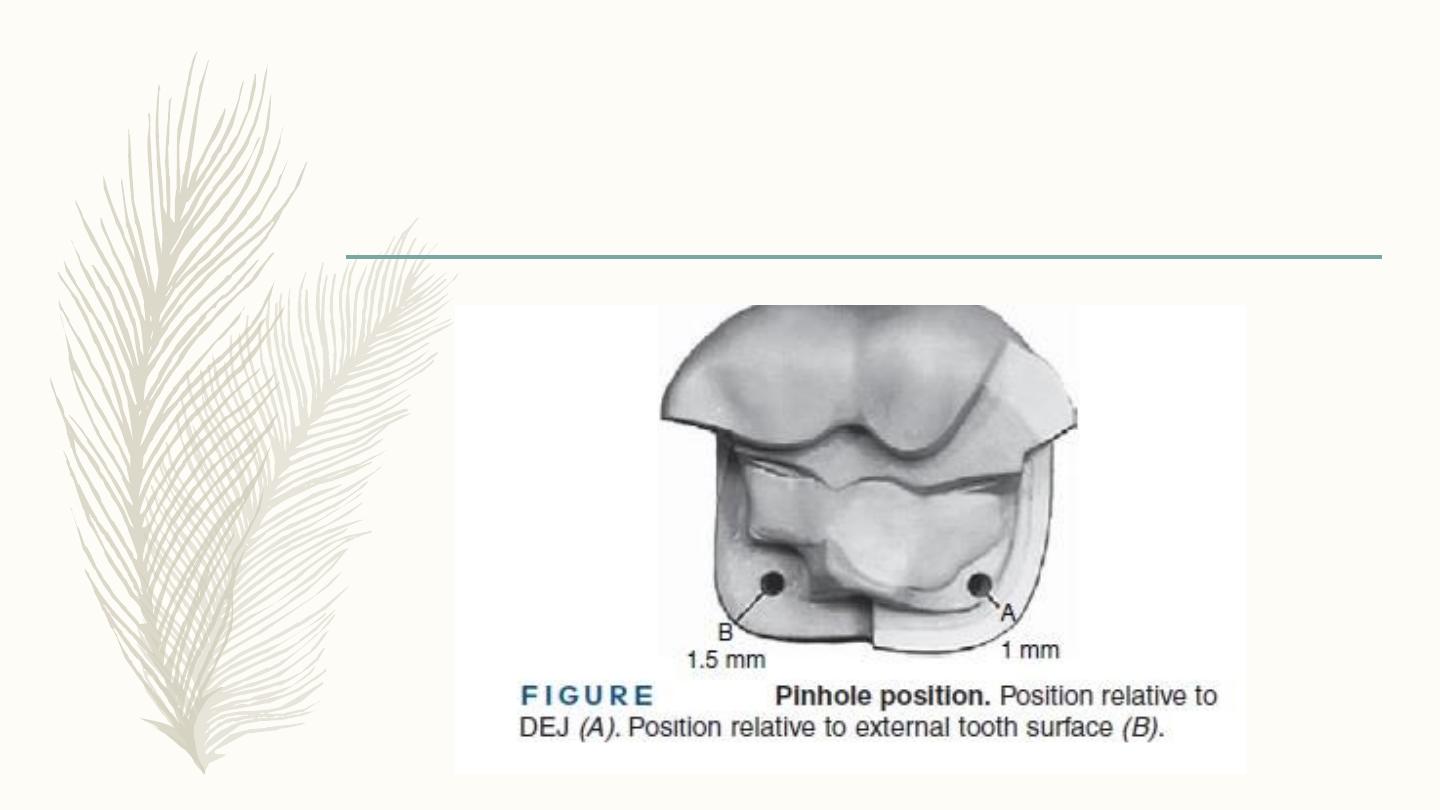
LOCATION
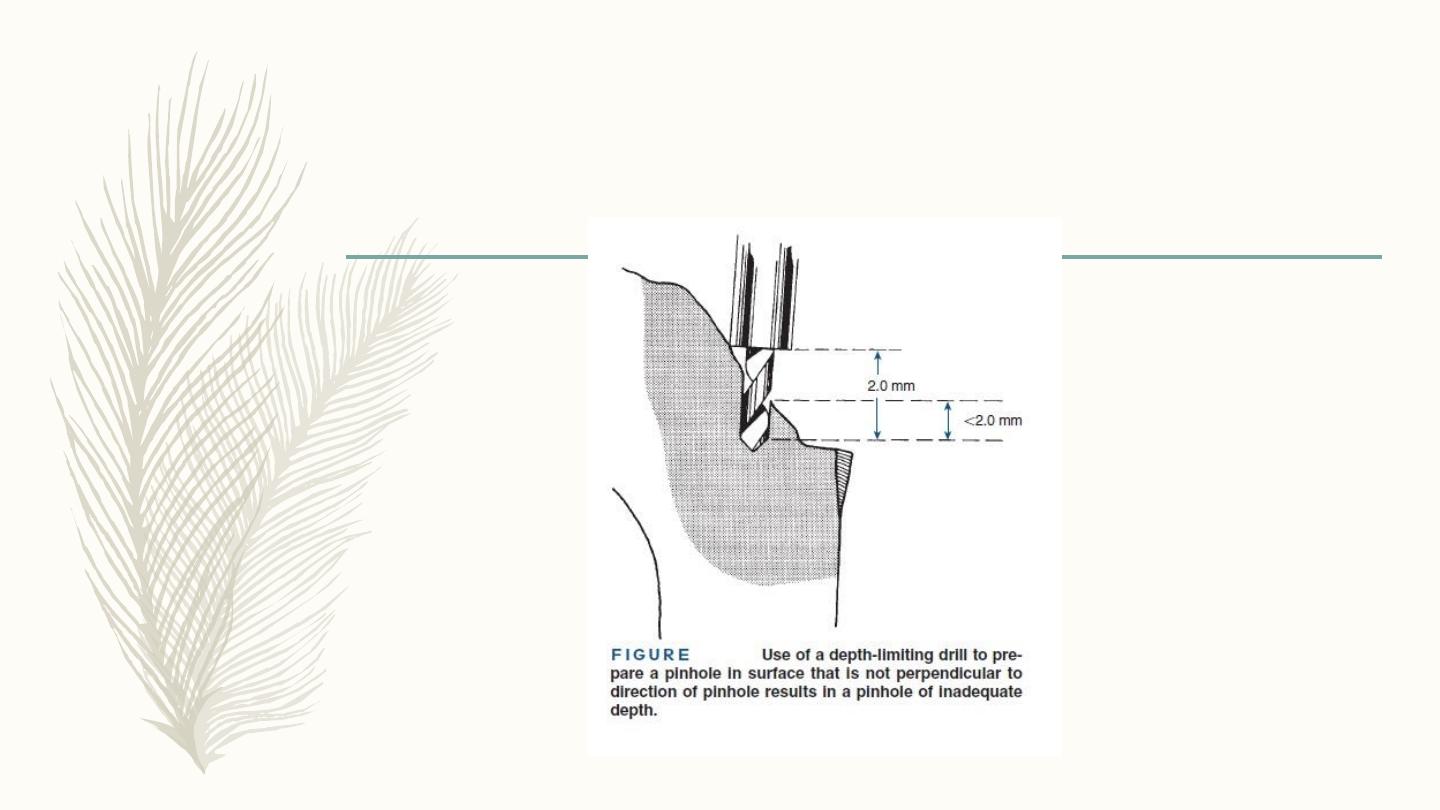
PIN PLACED CLOSE TO VERTICAL WALL

